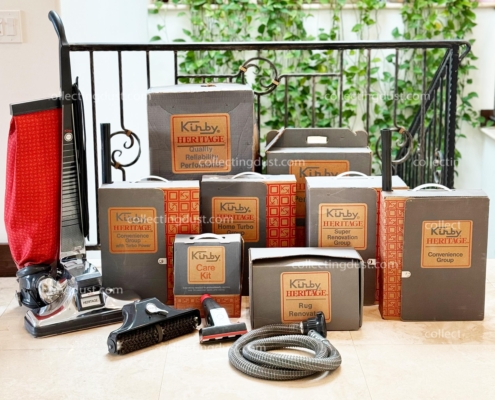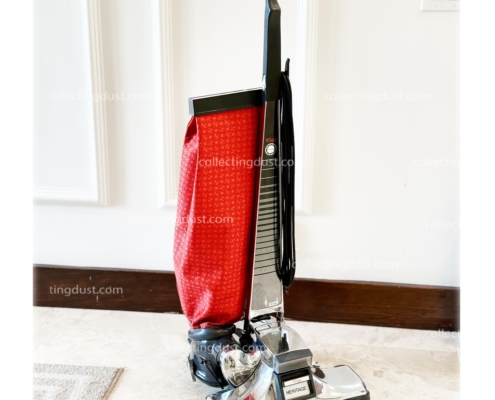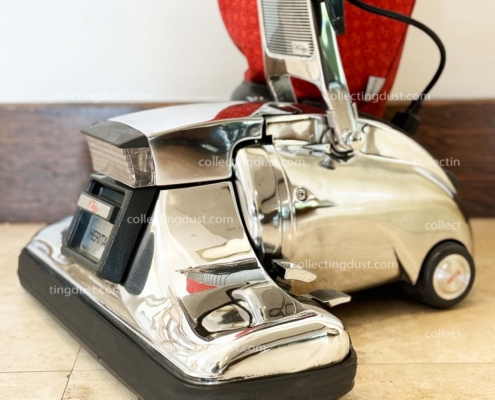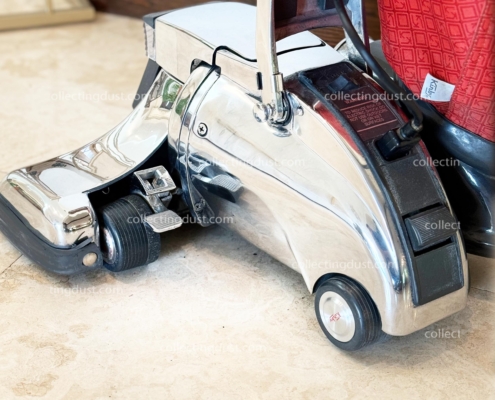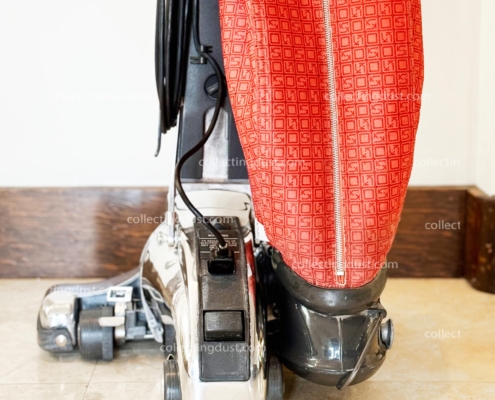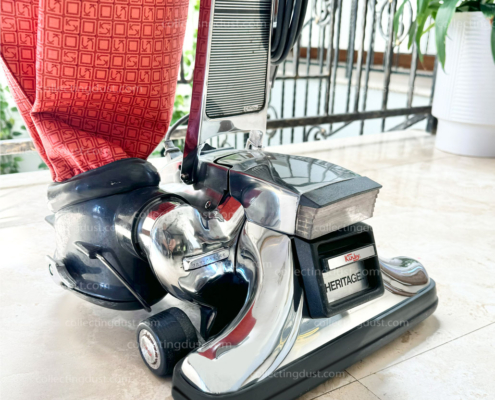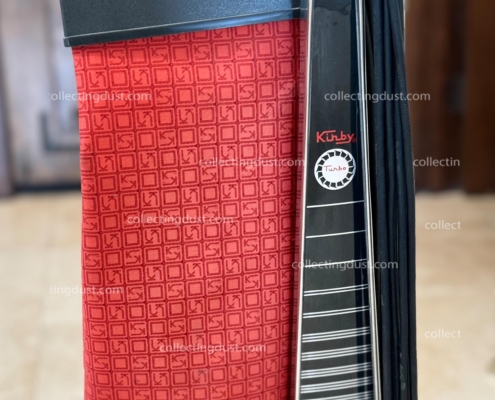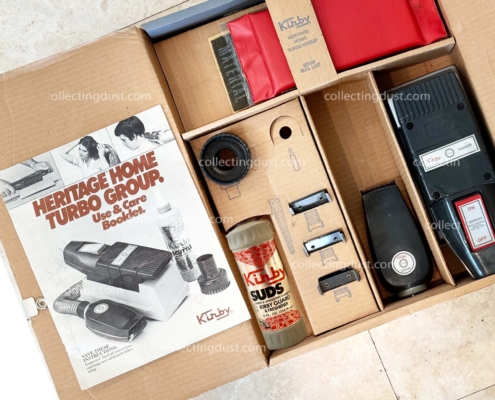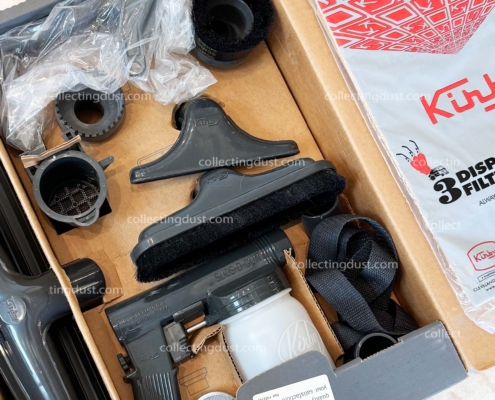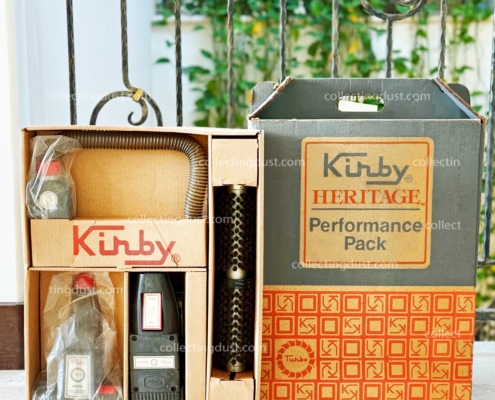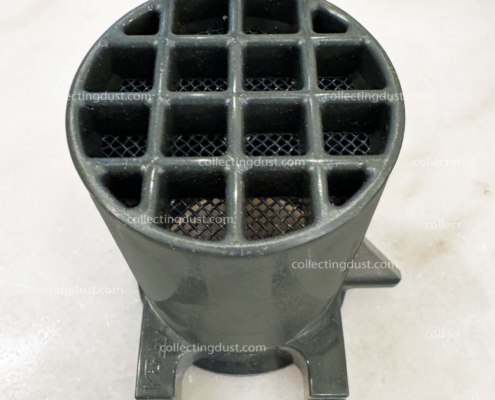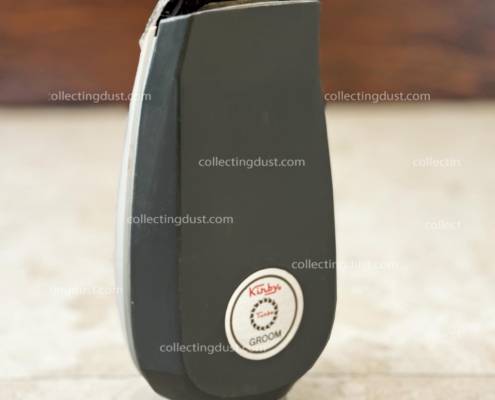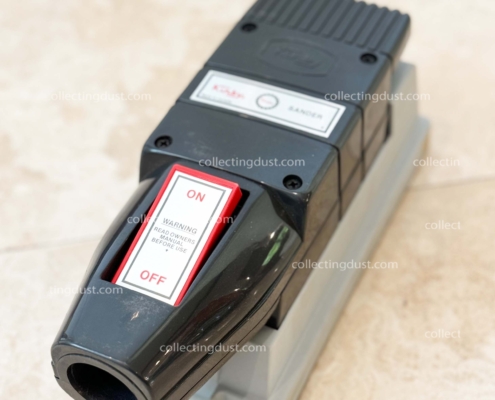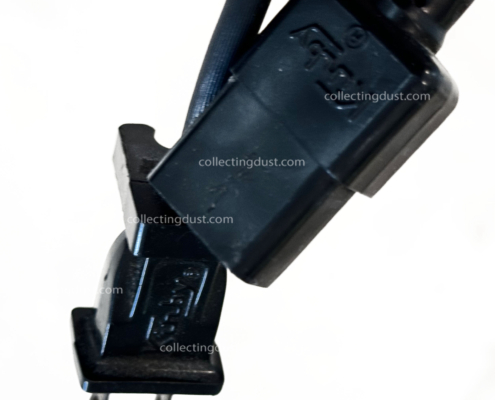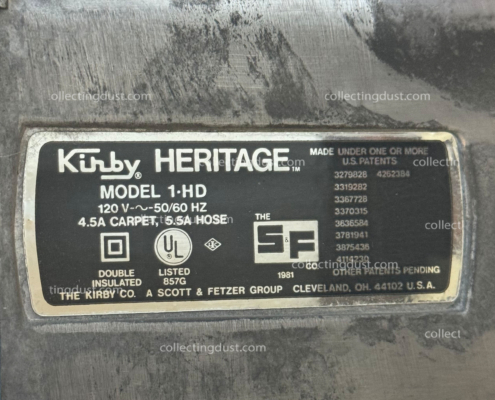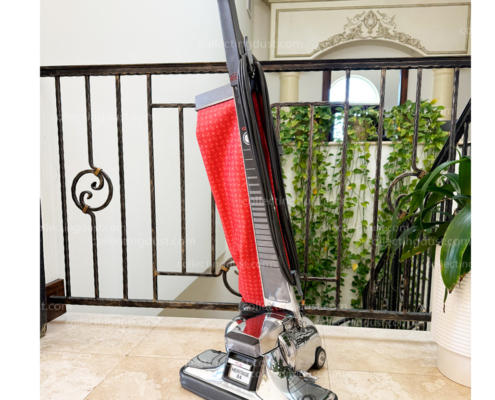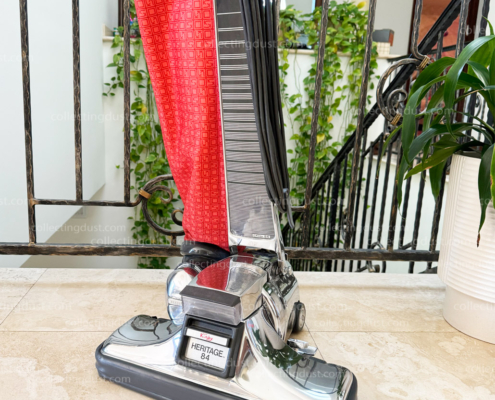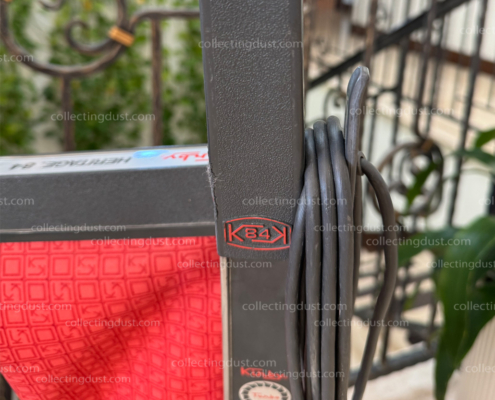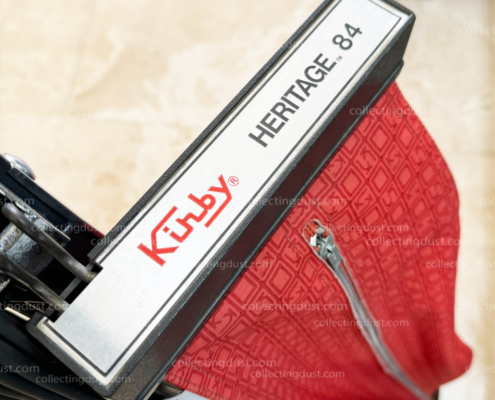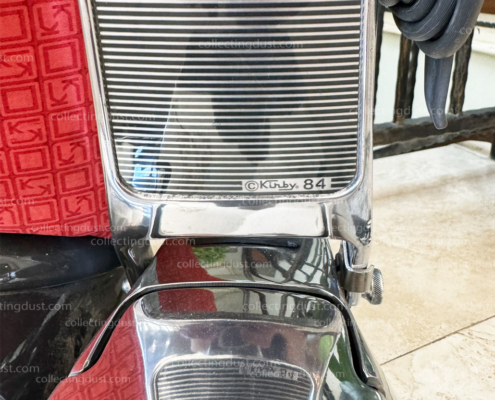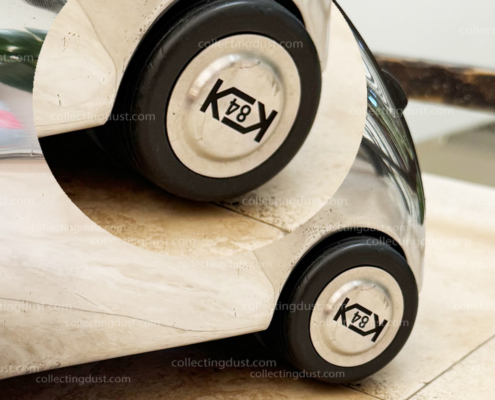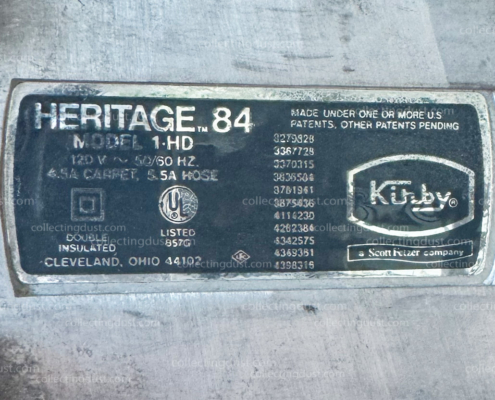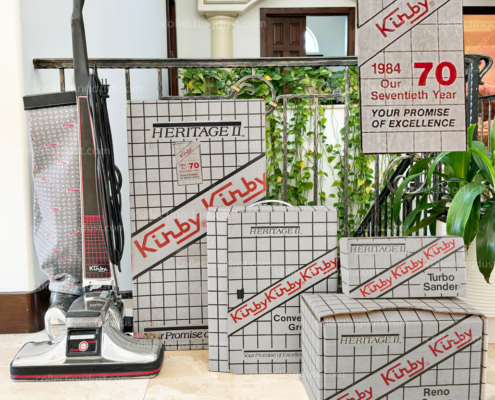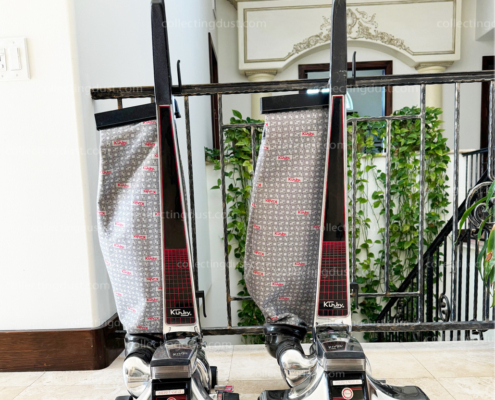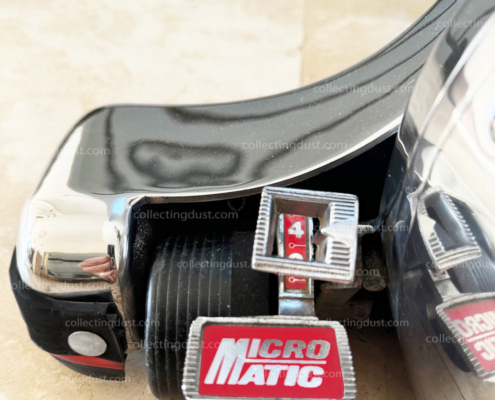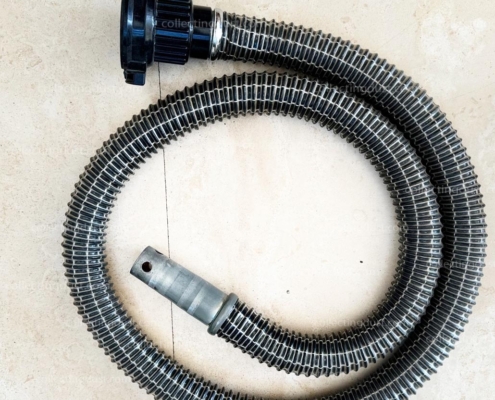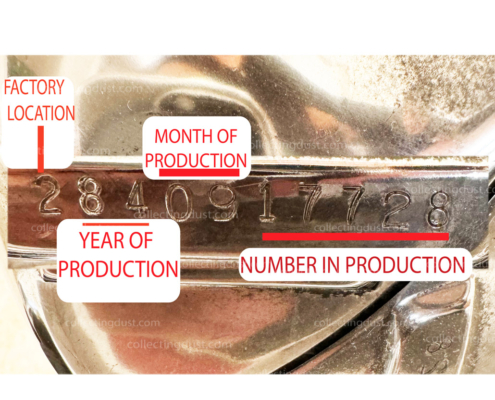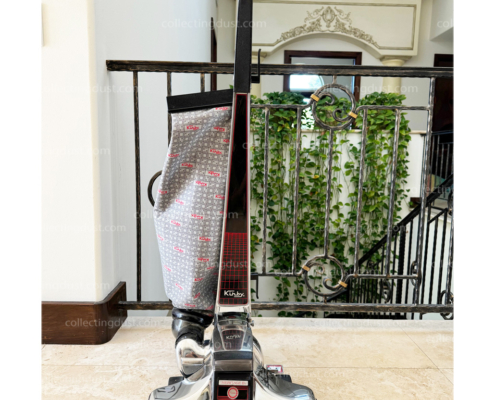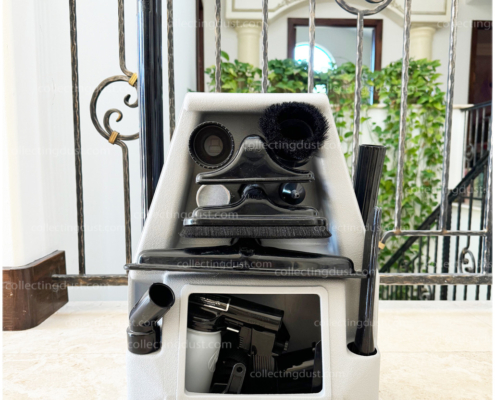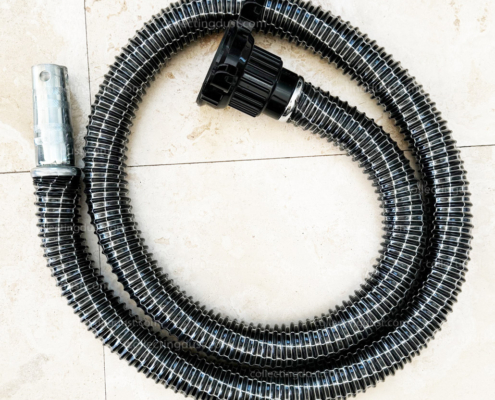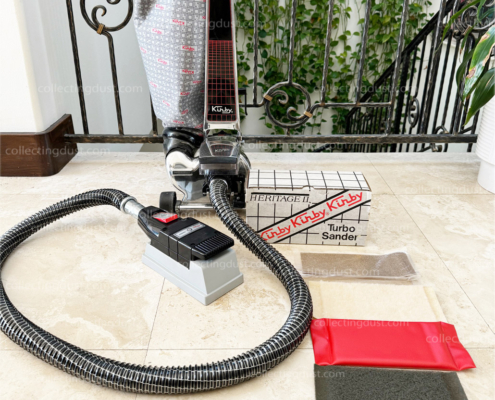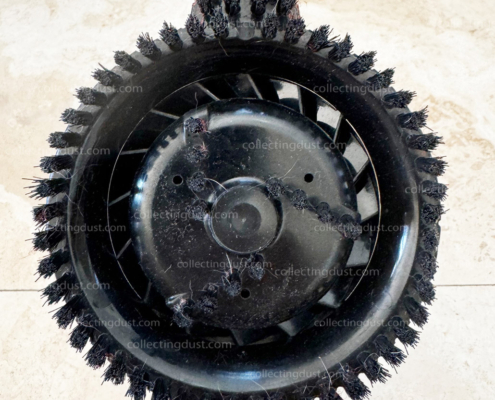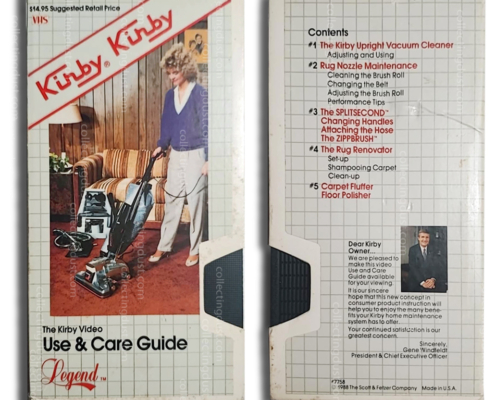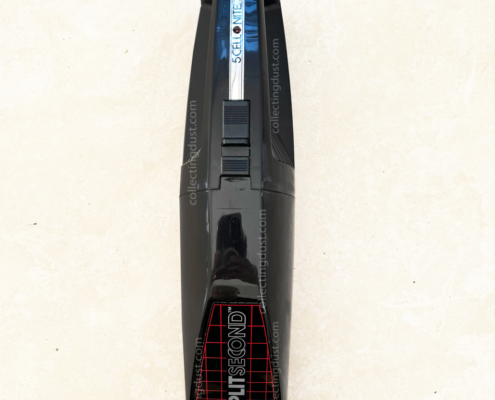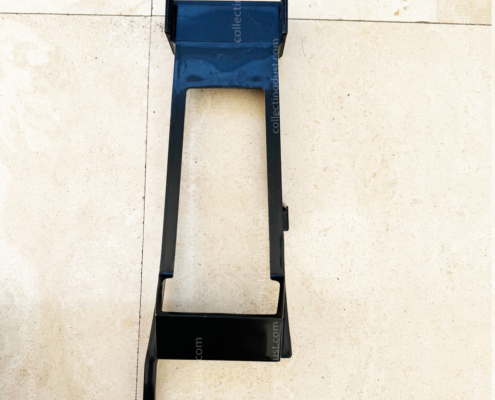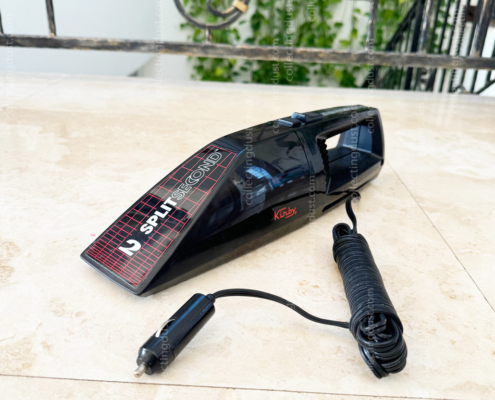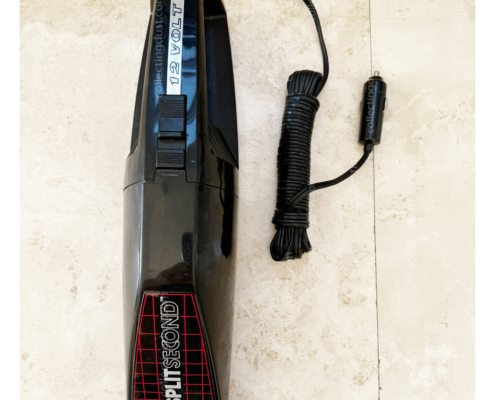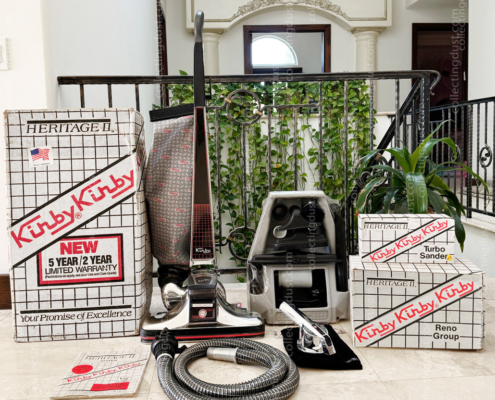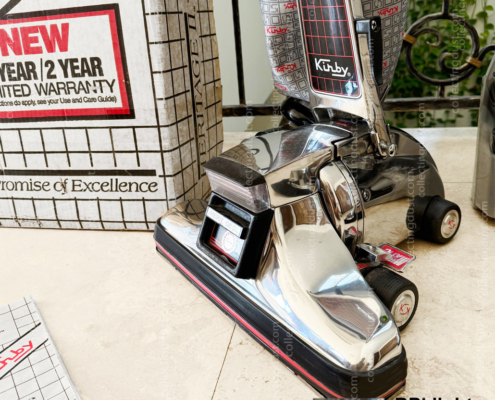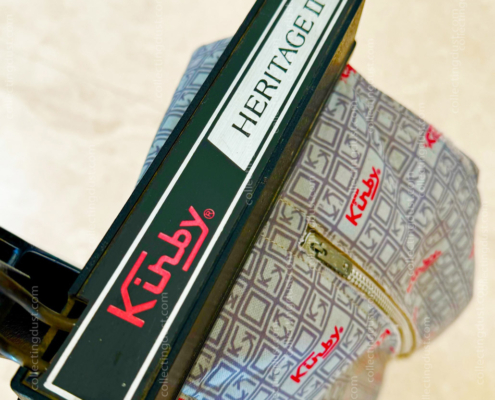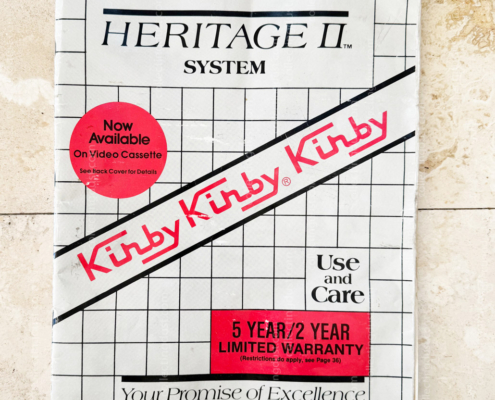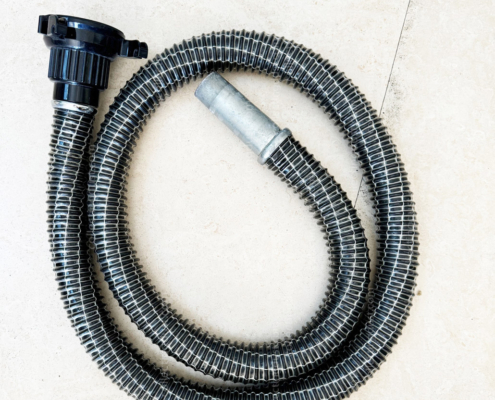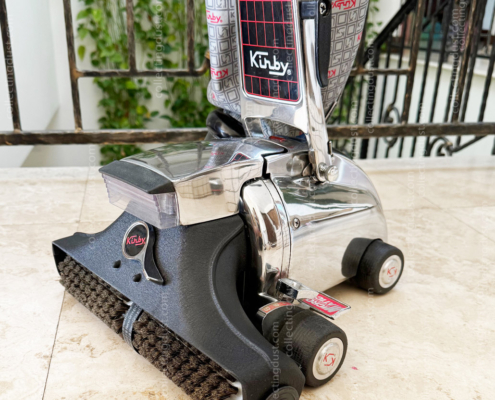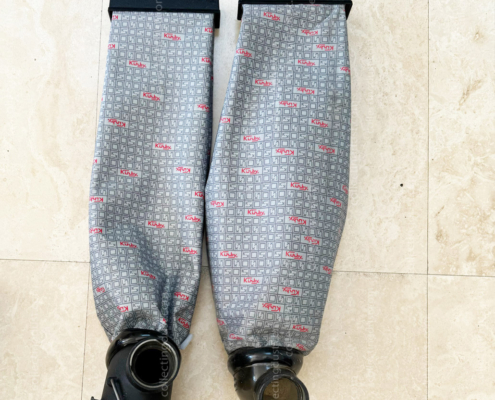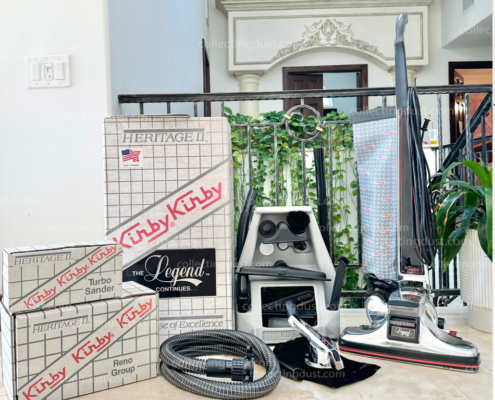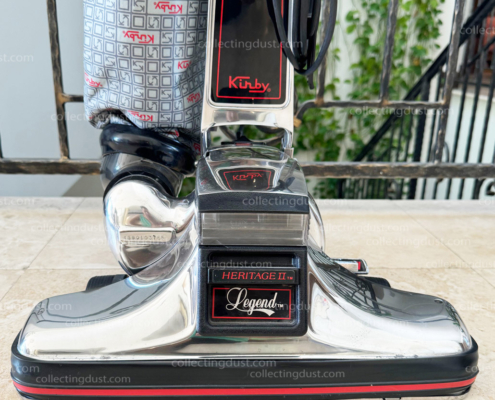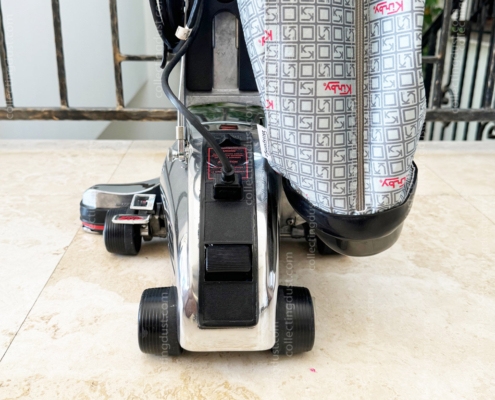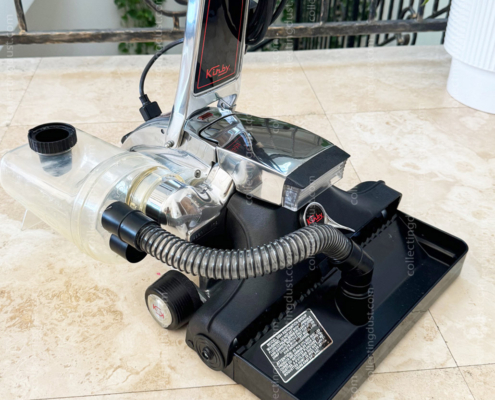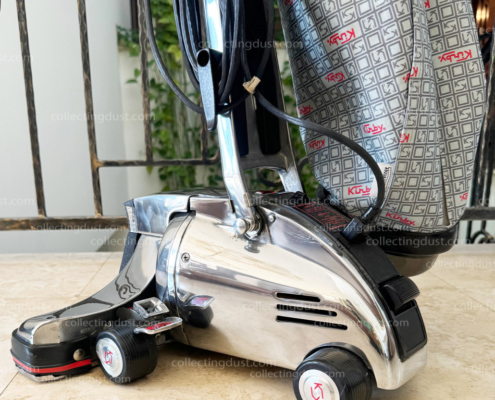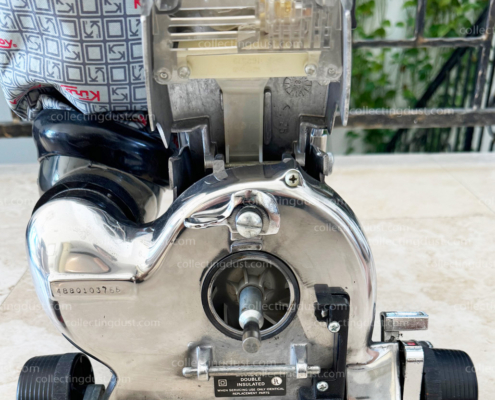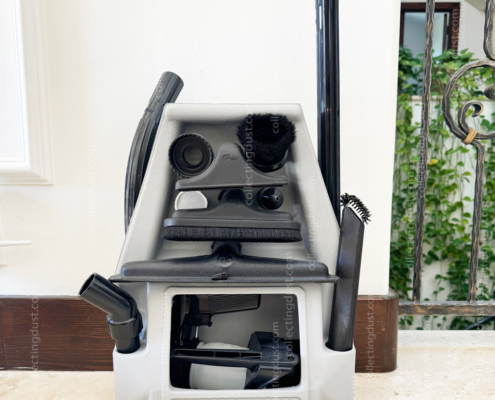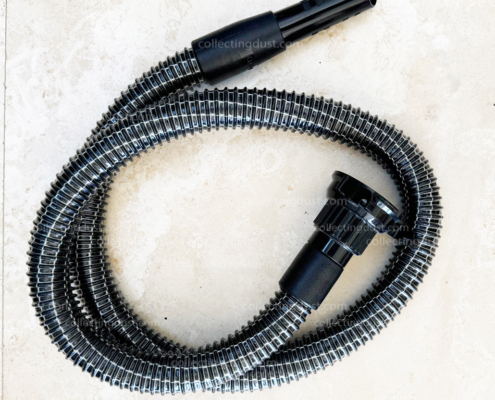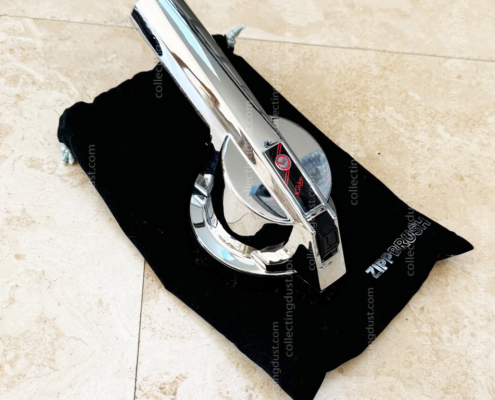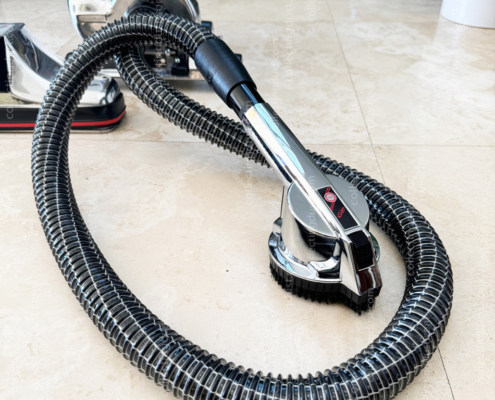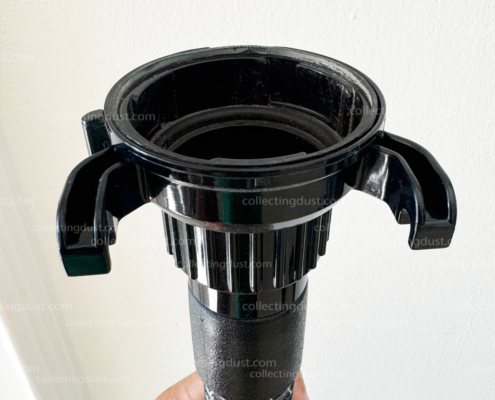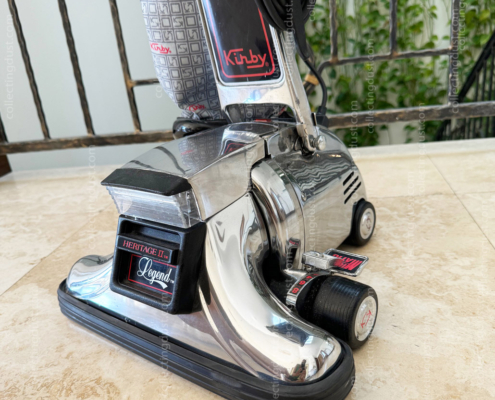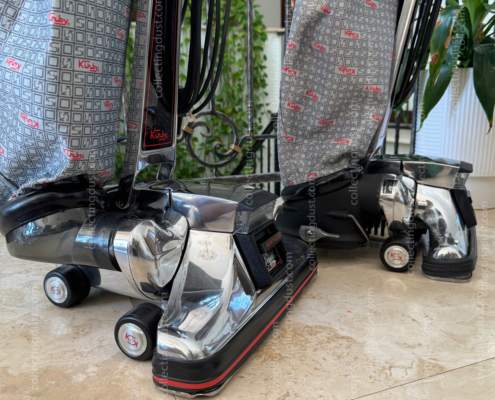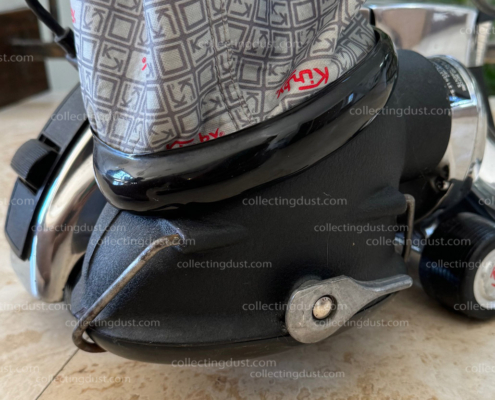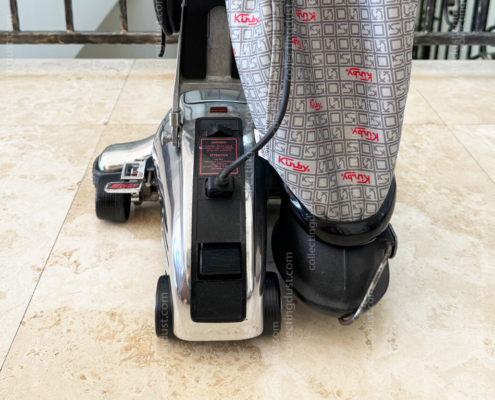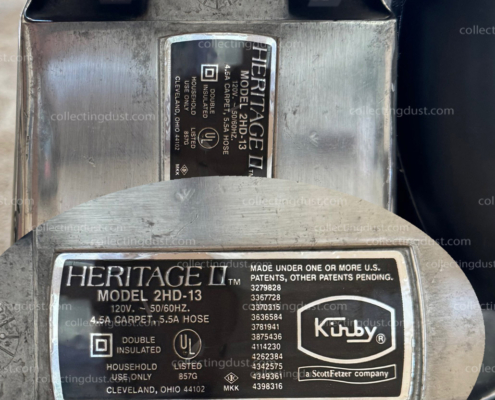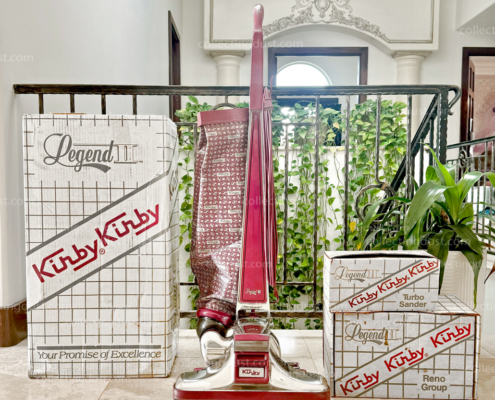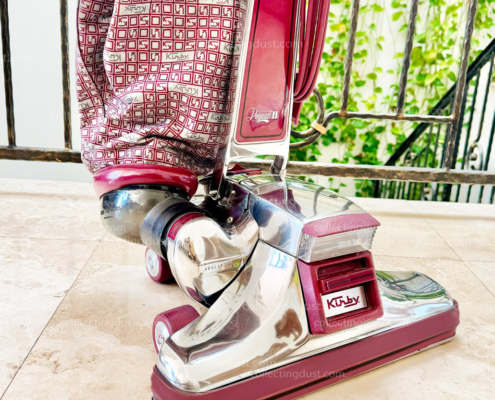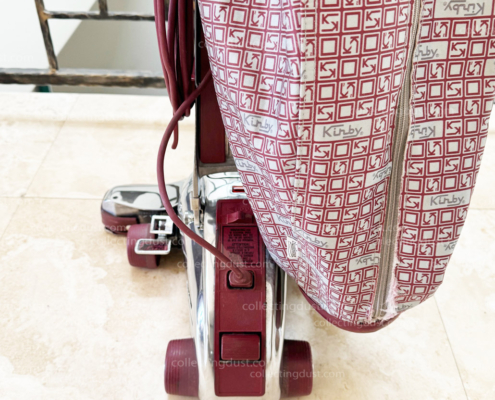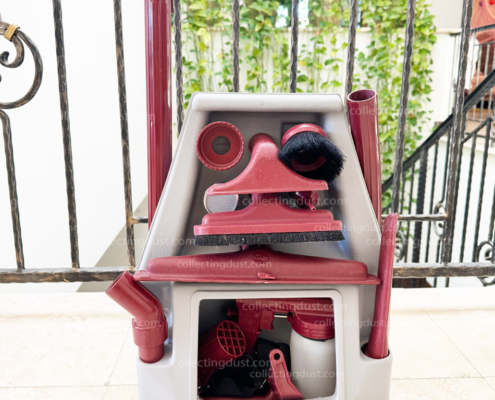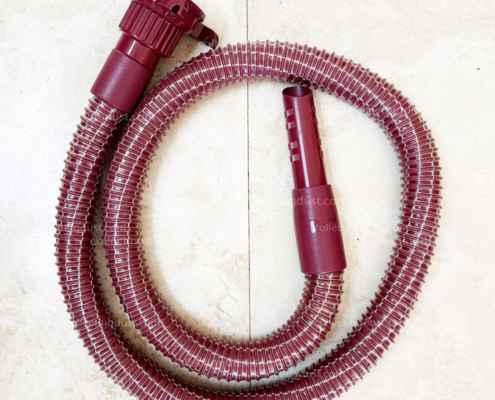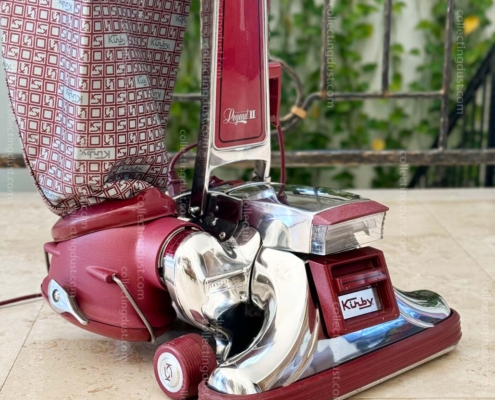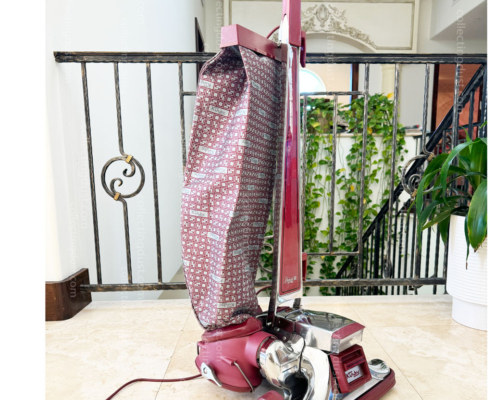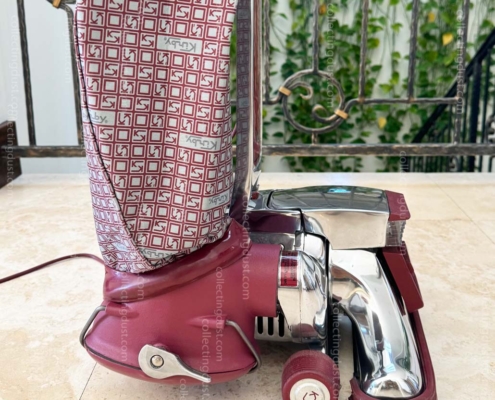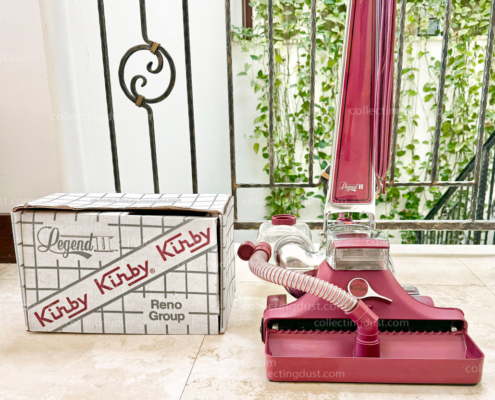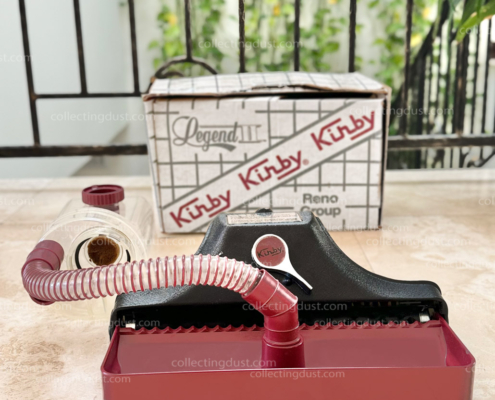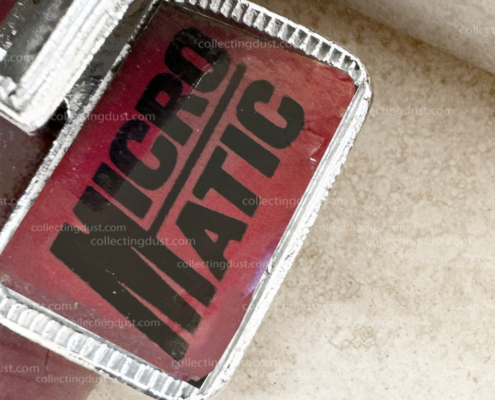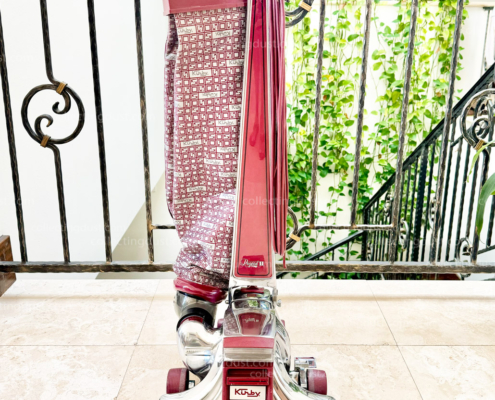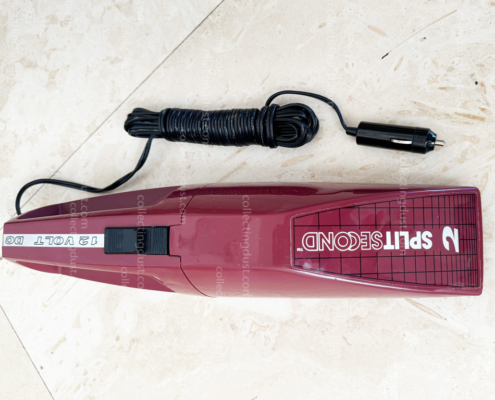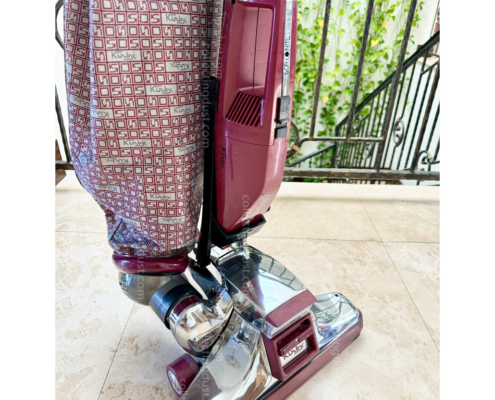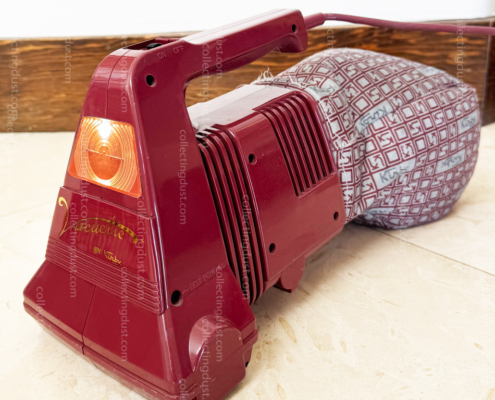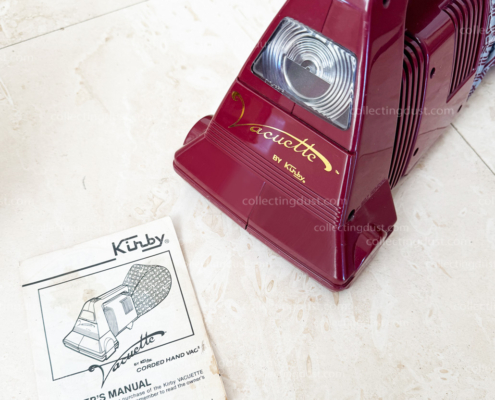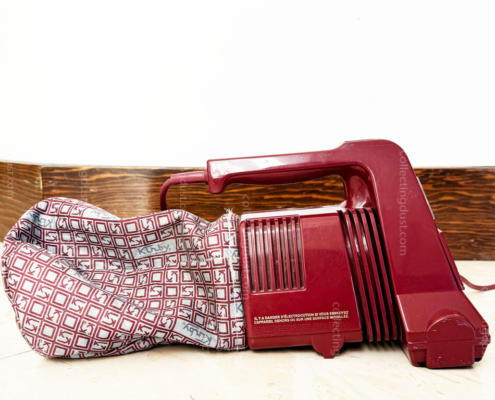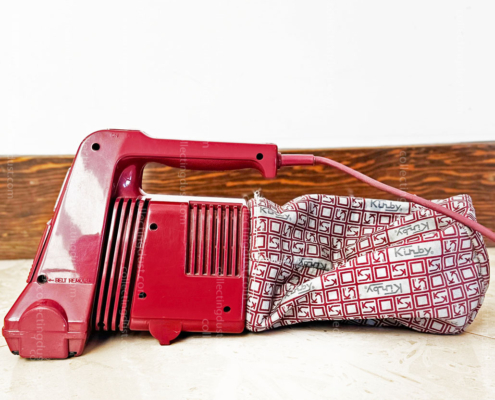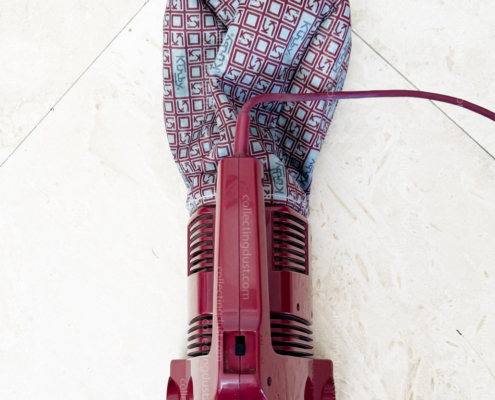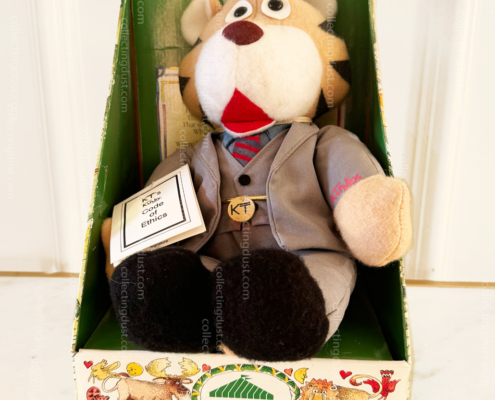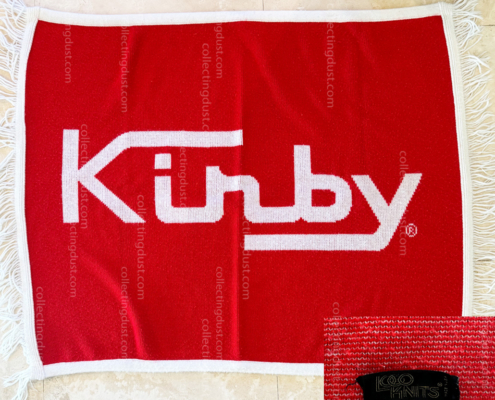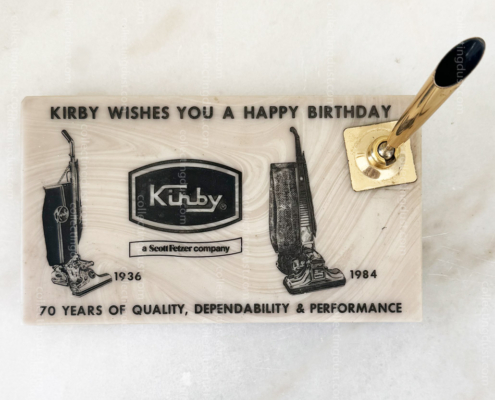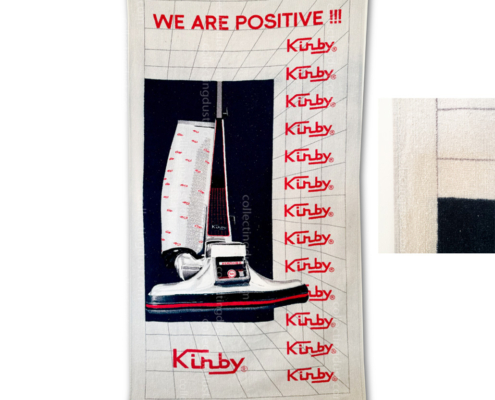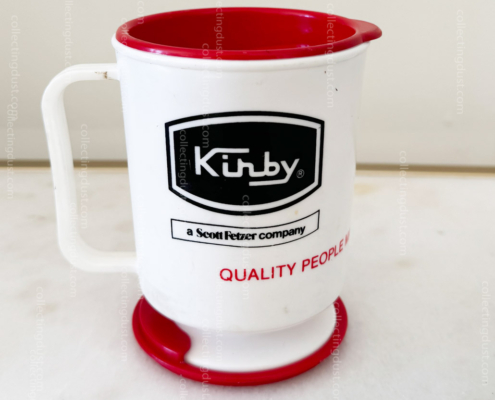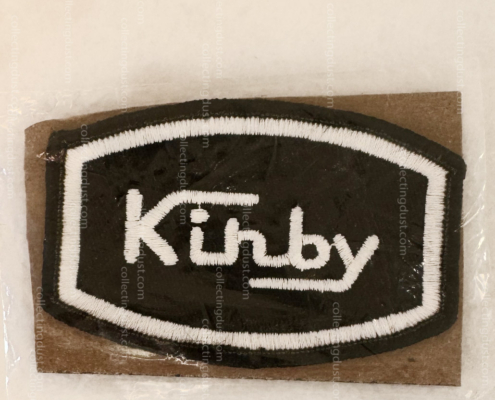Accessories, accessories, and more attachments. The Kirby Heritage model boasted the largest selection of attachments compared to any previous model. From a brand-new Turbo brush to a sander/massager, hair clipper, and many more. Kirby even gave their attachment collections new names to make them sound more professional and commercial-like. They used terms like “Super Renovation group”, “Convenience group”, and “Turbo group”, as shown in the pictures here. The color scheme of orange and gray was stunning. The rich orange colored bag with the Kirby font “K” pattern and squares in red. The bag now had a white tag with the Kirby logo and the vacuum printed on it in black. The bag’s top slide was made of sturdy gray plastic with the Heritage and Kirby logos printed on a silver decal The Heritage logo was printed in black on a silver decal, with the Kirby logo in orange on a separate strip above it. The hook was updated and made sturdier. Kirby got rid of the belt lifter window and replaced it with solid gray plastic, the Heritage logo was printed in black on a silver decal, with the Kirby logo in orange on a separate strip above it. New brushed silver color hubcaps were adorned with a new logo in orange. The Sani-Em-Tor was now still made of aluminum but powder coated dark gray to match the new color theme. it did however maintain the polished aluminum lock lever, The handle grip one solid piece construction was redesigned to be more user-friendly. Boxes were gray and natural brown with the Kirby “K” pattern and Heritage logos printed in orange. In 1981, for some reason, Kirby decided to use a cloth Fill Tube assembly that turned out to be faulty. They quickly replaced it with a plastic tube in March of 1982. The optional fabric dump bag was still available upon request. Rug plate was updated. As for attachments, the aptly named “Heritage Convenience group” included the following standard attachments: – Hose – Curved extension tube – Straight tube – Crevice tool – Portable handle with shoulder strap – Surface nozzle with swivel attachment – Duster brush – Turbo brush – Kirby disposable bags – Odorific – Room refreshener (7oz.) There were also nonstandard options: – Heritage “Super Renovation group “(1982/1983): This included the Rug Renovator, inflator deflator, air intake nozzle, suds-o-gun sprayer, floor polisher, carpet fluffer, and a 12 oz. Suds bottle. – Heritage “Handi-Butler group”: This Handi-Butler was the last belt-driven device and originally debuted with the model 509 in 1949. – “Heritage Home Turbo Group”: This group of attachments featured the Turbo-Sander, Turbo-Groom, massage cap, and related accessories. – Kirby Care Kit: This included solutions and accessories for stain removal. In 1983, some minor changes were made and featured in a revised Instruction manual. The “Convenience group” standard attachments no longer included the Turbo brush. Instead, new additions to the standard attachments were the utility brush nozzle, air intake guard, inflator/deflator, utility air nozzle, and Suds-o-gun. There was also a “Convenience group with turbo power”, which included the standard attachments along with the Turbo brush. At one point, a Performance pack was offered that included the Turbo brush, clippers and other attachments. Optional 13 inch nozzle was first introduced with this model
Disclaimer : Kirby® is a registered trademark of Kirby Opco , LLC. I have no affiliation with either Opco ,LLC current or previous owners of Kirby® , its subsidiaries, affiliates, or related companies. I am not employed, contracted, or compensated by them in any way. I do not represent the Kirby Company in any capacity.The information provided in these pages solely reflects my personal opinions and perspectives . It should not be considered as official Kirby Company policy, practices, regulations, guidelines, or opinions. This website material is intended for informational purposes ONLY!

